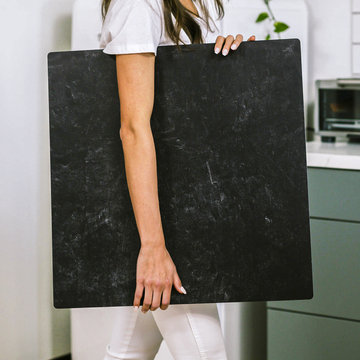When most people think of product photos, an image flashes to mind: a gorgeous candle, mug, or piece of jewelry, floating against a pristine white background. It's classic, clean, and widely used-from indie Etsy shops to global brands. But here's a twist: that "simple" white backdrop isn't quite as straightforward as it seems.
Behind every flawless white-background shot lies a secret world of science, craft, and surprising complexity. If you've ever wondered why your white background comes out dingy, blue-tinted, or just 'off'-you're definitely not alone. Understanding the hidden challenge of the white backdrop is a game-changer, whether you’re a home business owner, creative entrepreneur, or up-and-coming professional photographer.
White Is Never Just White
Let’s dive into a truth that surprises many beginners: not all whites are created equal. Different materials-like paper, fabric, vinyl, or foam-reflect light in their own ways. Even if they look white to our eyes, cameras and different lighting situations see those invisible details that can turn your photos unexpectedly blue, yellow, or dull.
Ever heard of metamerism? It’s a phenomenon where two objects-say, your product and the background-look perfectly matched in one kind of light, but clash awfully under another. The culprit is the unique “spectral fingerprint” of every surface. This can drive you mad in post-processing, when your “neutral” white background suddenly goes weird under a different lamp or on another screen.
Quick tip: Always test your white backdrop in the actual light you'll use for shoots. Take a few test photos, use your editing software’s eyedropper to check neutrality, and watch for any unexpected color casts before you commit to the full session.
Texture and Gloss: The Subtle Details That Matter
“Plain” doesn’t mean featureless-and in the world of product photography, even minor backdrop differences have a big impact. Glossy surfaces bounce light around, causing harsh reflections or odd shadows beneath your product. On the other hand, very matte surfaces (like basic art paper) can scatter light unevenly, adding subtle grain or visible patterns in your images.
If you’re after that perfectly clean “cut-out” look, pay attention to texture. Lay your backdrop under raking light (a flashlight aimed almost parallel to the surface) and look for bumps, dust, or slight sheen. These tiny details can become giant headaches once you zoom in on your product or try to clean up the shot in Photoshop.
Exposure, White Balance, and the Trap of “Blown-Out” Backgrounds
It’s easy to be fooled by your camera’s LCD or even your own eyes-a scene might look bright and white, but your digital sensor might be screaming. Often, you’ll either get a muddy gray (not white at all!) or the dreaded “blown highlights,” where the background goes so white that all detail is lost. This turns editing into a mess, creating halos or harsh transitions around your product.
What’s the workflow of a pro? Here’s a simplified approach:
- Expose for your product first. Make sure it’s crisp and well-lit without any loss of detail in highlights or shadows.
- Light the background separately-often with a dedicated light or reflector-so it brightens up to a point just below pure white (imagine “paper white” in RGB terms, around 240-250, not a blinding 255).
- Shoot RAW. This gives you maximum flexibility to fine-tune exposure and color balance in editing.
- Edit gently. Instead of cranking up the whites, finesse the brightness until it looks even and professional, but still natural.
Mastering White: The Professional’s Secret Weapon
Here’s the real reason white backdrops are worth sweating over: when you get them right, everything in your frame suddenly pops. Pure, clean whites amplify color, make products stand out, and lend a sense of polish to any image. But more than that, they reveal your skill as a photographer-they’re absolutely unforgiving of mistakes, but endlessly rewarding if mastered.
For creatives and entrepreneurs who can nail a perfect white background, every other surface and style becomes easier. The white backdrop isn’t just a ‘blank’ starting point-it’s proof you know how to control light, color, and the overall story of your photo.
Quick Tips for Flawless White-Background Product Photos
- Invest in backdrop quality. Cheap paper yellows quickly and shows every crease. Museum-grade photo board or vinyl gives better, longer-lasting results.
- Test before every shoot. Don’t trust your eyes-use your camera and software for consistency.
- Watch your surface and lighting. A little gloss or bump can ruin hours of editing. Raking light reveals issues fast.
- Work in RAW and edit mindfully. Don’t blow out your background-raise it just enough for a crisp, clean effect.
- Experiment and refine. Every product, surface, and lighting setup is different. Small tweaks bring major improvements.
Conclusion
The plain white backdrop is the hidden challenge of product photography-one that magnifies every detail and punishes the “quick and easy” approach. But with a little technical know-how and attention, you'll transform ordinary product shots into images that grab attention and inspire trust.
If you’re ready to dig deeper, stay tuned for more advanced tips on backdrop choices, DIY setup tricks, and editing magic. Mastering white might feel tricky at first-but it’s the foundation for every great photo you’ll ever create.



